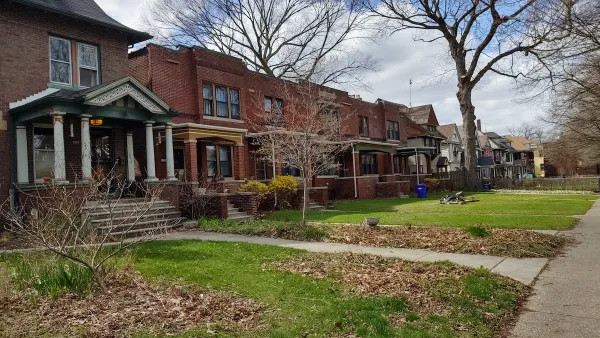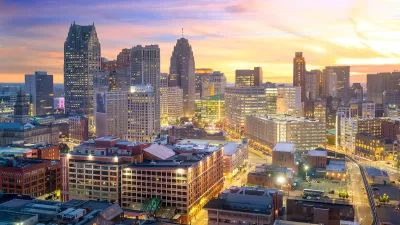The near-bankruptcy of the American auto industry is just the latest in a long history of challenges Detroit has endured.
"By almost any measure, Detroit is in deep trouble. Unemployment has risen above 20 per cent, the city's government is more than $300-million (U.S.) in debt, there are 87,000 vacant homes and one study recently reported that about 30 per cent of the city is now vacant land.
The population started to decline slowly in the 1950s with the advent of suburbs and the development of a freeway system that made commuting easier. The turning point came in July, 1967, when race riots destroyed much of the downtown and left lasting emotional scars. The rioting hastened the flight of whites to the suburbs, leaving Detroit to cope with a falling population and a reduced tax base.
While few people in Detroit are banking on the auto sector to help revitalize the economy, there are signs of hope. A $100-million non-profit venture, called the New Economy Initiative, is providing grants to help start dozens of new businesses. Another non-profit group, the Detroit Vacant Property Campaign, is helping revamp abandoned houses, and Mr. George said he has more than 10,000 registered volunteers who help clean up neighbourhoods. Home sales are on the rise, jumping 18 per cent last month from a year ago as buyers start to snap up bargains."
FULL STORY: Motor City Stalling

Planetizen Federal Action Tracker
A weekly monitor of how Trump’s orders and actions are impacting planners and planning in America.

Chicago’s Ghost Rails
Just beneath the surface of the modern city lie the remnants of its expansive early 20th-century streetcar system.

San Antonio and Austin are Fusing Into one Massive Megaregion
The region spanning the two central Texas cities is growing fast, posing challenges for local infrastructure and water supplies.

Since Zion's Shuttles Went Electric “The Smog is Gone”
Visitors to Zion National Park can enjoy the canyon via the nation’s first fully electric park shuttle system.

Trump Distributing DOT Safety Funds at 1/10 Rate of Biden
Funds for Safe Streets and other transportation safety and equity programs are being held up by administrative reviews and conflicts with the Trump administration’s priorities.

German Cities Subsidize Taxis for Women Amid Wave of Violence
Free or low-cost taxi rides can help women navigate cities more safely, but critics say the programs don't address the root causes of violence against women.
Urban Design for Planners 1: Software Tools
This six-course series explores essential urban design concepts using open source software and equips planners with the tools they need to participate fully in the urban design process.
Planning for Universal Design
Learn the tools for implementing Universal Design in planning regulations.
planning NEXT
Appalachian Highlands Housing Partners
Mpact (founded as Rail~Volution)
City of Camden Redevelopment Agency
City of Astoria
City of Portland
City of Laramie





























